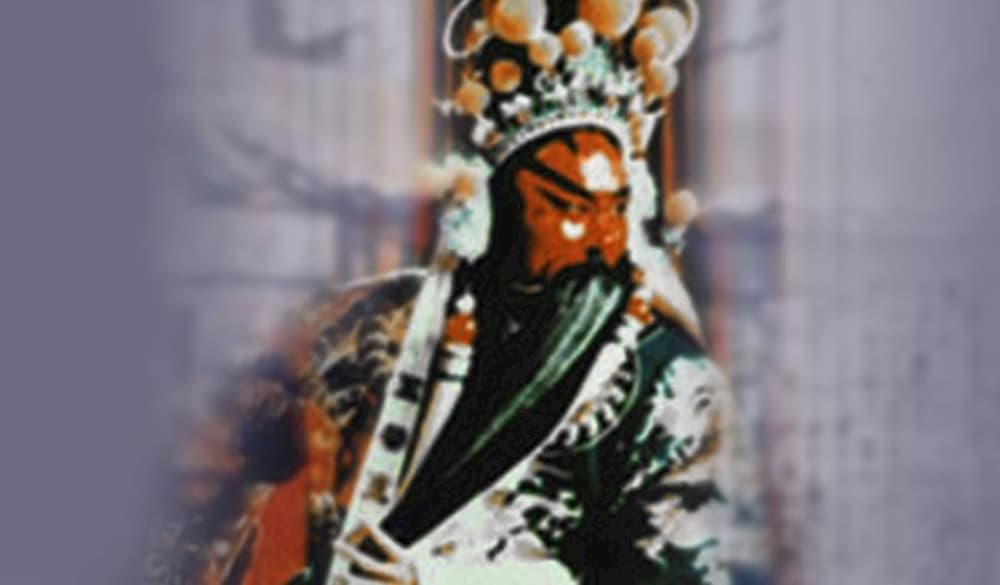
Guan Hanqing and Yuan Zaju Drama
Splendid
Chi Culture
Topic
Guan Hanqing and Yuan Zaju Drama
Zaju literally means “variety show,” and Yuan zaju is short for Yuandai zaju, meaning “variety show, drama, or opera of the Yuan dynasty.” It is a mix of literary, visual, and performing arts which includes poetry, acting, singing, dancing, mime, acrobatics, music, stage sets, and costume design that coalesced in the Yuan dynasty (1271–1368) as China’s first mature form of theater with countrywide distribution and support. As a literary form, zaju is representative of Yuan literary achievement in the same way that shi poetry is synonymous with the Tang dynasty (618–907) and ci poetry with the Song dynasty (960–1279).
The development of Yuan zaju included the incorporation of elements of earlier theater and prosimetric arts. There are five main reasons for its fluorescence during the Yuan period: the prosperity of the urban economy, the widespread popularity of folk theater, the patronage of the upper classes, the participation of literati, and the influence of famous performers. The unique social and historical background provided a rich environment for Yuan zaju to grow, allowing it to blossom into a vibrant multimedia art form.
There are three basic components or aspects to Yuan zaju: the form of the play’s script, the performance, and the source of its subject matter. The libretti of zaju scripts are written in a mixture of verse and prose. They consists of three components: arias (quci or song verse), spoken lines, and stage directions, which guide performers on how to sing, speak, and move on the stage. In terms of performance, the drama can be enacted by the actors alone without musical accompaniment or with singing to a flute, drum, or clappers. These components of zaju, which first came together with other aspects of performance arts during the Yuan period are now common features of Chinese traditional theater. In terms of subject matter, Yuan zaju can be grouped into historical, romantic, and social dramas. Zhaoshi gu’er (Orphan of Zhao), Mianchi hui (The meeting at Mianchi), and Xixiang ji (Story of the western wing) are all famous works of zaju theater. It is fair to say that Yuan zaju is the prototype for later Chinese opera and theater arts.
The emergence of a new art form relies on cultural patrimony inherited from the past that is brought to fruition in the hands of certain individuals. There is no doubt that Guan Hanqing was one of the important playwrights who brought the zaju form to fruition during the Yuan period.
There are no birth and death records for Guan Hanqing, but the years 1225 to 1302, which straddle the fall of the Song and the beginning of the Yuan dynasty, have been proposed as credible dates for him. Like the majority of Han Chinese literati living under Mongol Yuan rule, Guan was blocked from government service, so he turned to playwriting for his livelihood. According to the Xijin zhi (Gazetteer of Xijin [Beijing]), Guan was “born to be untrammeled, erudite, humorous, wise, refined and to excel in writing. The depth of his thoughts and the unconventionality of his lifestyle are incomparable.” His personality traits and broad interests provided him with the creative skills to become one of China’s greatest dramatists. He also performed on the stage, so his zaju scripts exhibit excellent stage directions.
Guan Hanqing’s historical dramas include Dandao hui (Going to a meeting with a single sword) and Ku Cunxiao (Weeping for Cunxiao). These works show the playwright’s judgment and understanding of historical events and people through arias in which he eulogized the heroes of Chinese history. Guan’s romantic dramas include Wang jiang ting (The riverside pavilion) and Bai yue ting (Worshipping the moon pavilion), in which he exhibits deep sympathy toward the plight of women with strong personalities who meet with misfortunate in love and marriage. His court-case dramas and social commentary dramas are also outstanding. Cohesive organization, reversals of fortune, conflicting values and desires, and rich character development and imagery showcase Guran’s wide range of theatrical skills. He is indeed the “king of drama” and the “father of theater arts” in China.”
Unlike other dramatists of his time, Guan Hanqing was more attuned to the lives of vulnerable populations and portrays them with realism and compassion in his works. When faced with misfortune, the characters in his dramas never look to escape into the realm of immortals for comfort and redemption. Instead, they always do their utmost to seek the best way out of their troubles, highlighting the value of tenacious faith and optimism among ordinary people.
Apart from Guan Hanqing, there were many other dramatists who contributed to the prosperity of the zaju form during the Yuan. Ma Zhiyuan (ca. 1250–1321) was called “Qu zhuangyuan” (literally “number one scholar of qu) for his achievements in sanqu, a type of colloquial song composed by literati poets, and Zheng Guangzu (1260–ca. 1320) who was given the appellation “Old Gentleman Zheng” by admiring performers. Wang Shifu (1250–ca. 1337) is still another outstanding playwright; his Xixiang ji (Story of the western wing) has the well-deserved reputation of being “the number one favorite drama of all time” and is still performed today. The aforementioned Zhaoshi gu’er (Orphan of Zhao) by Ji Junxiang (thirteenth century) and the Huilan ji (The chalk circle) by Li Qianfu (fourteenth century) are also famous works of zaju whose fame still remains.



